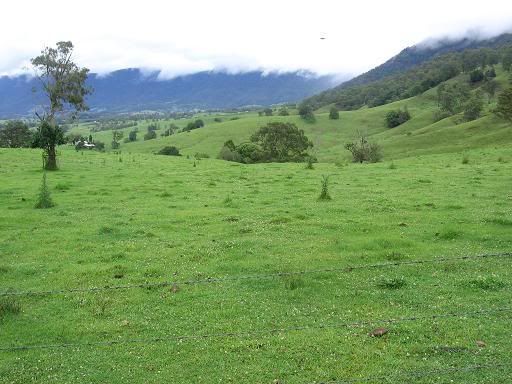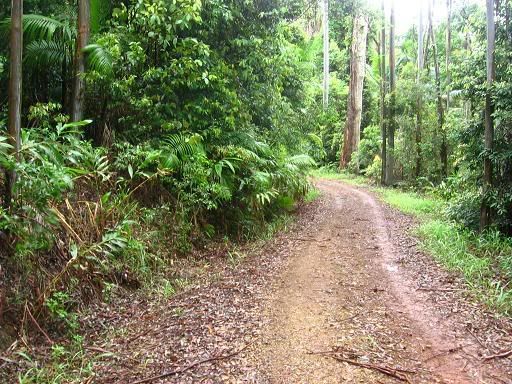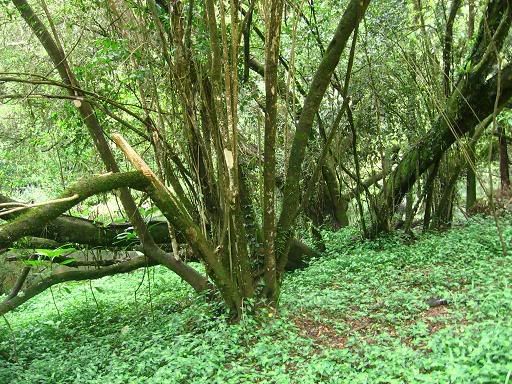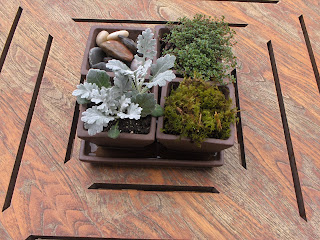The reference in the title is to the first of four flights the Wright Brothers achieved on December 17, 1903. Before I get into our visit to the Wright Brothers National Memorial, however, let’s get two things straight.
First, the Wright Brothers were not the first to fly. Now wait a minute. Before you tar and feather me for heresy, let me explain. The first recorded manned flight was in 1783 and it was in a hot air balloon built by the Mongolfier Brothers. On that flight, the pilots achieved a height of approx. 500 feet (~152 m) and traveled a distance of 5½ miles (~9 km) in 25 minutes. That flight was certainly longer and farther than what the Wright Brothers achieved on their first flight — distance of 120 feet (~37 m) in 12 seconds.
There were others as well who experimented with aerodynamics and flight — Cayley, Penaud, Lilienthal, and Chanute, to name a few. So, why is it that when one thinks of the first flight, the names that immediately come to mind are of Orville and Wilbur Wright? It’s because they achieved the first controlled powered flight in a heavier-than-air machine, thus heralding the era of aviation.

Orville at the controls & Wilbur running alongside, the 1903 Flyer soars into the air.
[from the mural in the centennial pavilion on the memorial grounds]
About that second thing to get straight. Even though the Wright Brothers’ first flight has always been associated with Kitty Hawk, the actual location is Kill Devil Hills, just a short distance down the road. Back in the time there was nothing but sand dunes between Kitty Hawk and Nags Head. Today, surrounding the sand dune from which the experimental flights were launched is a town that was incorporated in 1956.

”26 acres of shifting sand” is how Big Kill Devil Hill is described.
Now stabilized, the sand dune supports the monument that honors the wrights.
Here’s a quirky bit of information from the Kill Devil Hills visitor guide, which puts forth two theories on how the town’s name came about.
Legend is that Kill Devil Hills’ name originated many years ago when sailing ships, transporting rum from the tropics to markets in the north, would wreck along the Outer Banks coast. Their cargo would wash up onto the sand hills, sit until found by the local population who would say that the rum was strong enough “to kill the devil.” Another story about the town’s name comes from a legend involving a local man who, in an attempt to extort money from the devil, entrapped him in a pit at the top of the big hill that is now the site of the huge granite pylon honoring Wilbur and Orville Wright.
 |  |
Orville and Wilbur — dedication and stubbornness led to the realization of a dream.
[from an exhibit in the centennial pavilion]
I could write volumes about the achievements of the two men — proprietors of a bicycle shop in Dayton, Ohio — who had a dream: the possibility of human flight. But others have already done the writing, so I’ll just point you to this Wikipedia post. Let me also link you to this site, which has a few historic photos of interest.
We arrived at the Wright Brothers National Memorial with $80 clutched in our hands to buy a new annual park pass, but they wouldn’t take our money. As it turns out, it was National Park Week and entry was free to one and all. No worries, they’ll get our money at some point. The hour was early and there weren’t many people around. By the time the 10:00a Park Service lecture began, it was a whole different story with standing room only in the rather large room.

After briefly perusing the exhibits in the visitor center, we took advantage of the time we had before the lecture to wander over to the First Flight Boulder, which marks the starting point of the four powered-flights that made history on December 17, 1903. One nearby sign explained that the landing skids of the 1903 Flyer had to be placed on a monorail — the surrounding soil was too soft to launch with conventional wheels. Another sign brought the first flight alive … in Orville’s words:
The flight lasted only 12 seconds, but nevertheless the first time in the history of the world in which a machine carrying a man had raised itself by its own power into full flight, had sailed forward without reduction of speed, and had finally landed at a point as high as that from which it had started.
Next, we did what almost every visitor to the memorial site does — starting from the boulder, we ran the series of four markers that represent the landing points for the December 17 flights. Stopping at each marker to read the vital statistics — time in the air, distance, and pilot — we continued to further our “first flight education” and have a bit of fun in the process.
 |  |
The commemorative boulder, replica monorail, and the markers representing the historic flights.
If you look really carefully at the picture on the right, you’ll see Mui re-creating the flights in one fell swoop by running the path in reverse — a distance of 852 feet (~260 m).

Short they May have been, but these flights ushered in the era of aviation.
Whenever we visit a national park, if time permits, we participate in the ranger-led programs. We’ve not been disappointed in one yet; and today’s lecture was no different. Seated in chairs encircling replicas of the 1902 Glider and the 1903 Flyer, on exhibit in the center of the Paul E. Garber First Flight Shrine (portrait gallery), we listened as the ranger took us back to the time when the Wright Brothers were welcomed to Kitty Hawk with the words: “If you decide to try your machine here, you will find hospitality.”
Indeed, not only were they warmly welcomed, local families and crew members from the nearby life saving stations provided the Wrights with much needed assistance. Five of these men, in fact, helped move the Flyer to the launch rail and stayed on to cheer as it lifted off the ground on that historic day. One of them, John T. Daniels, a surfman from one of the life saving stations — a man who had never handled a camera before — had the privilege of documenting the first flight. It goes to show that being in the right place at the right time counts just as much as knowing how to use a camera.

It wasn’t until the Wrights returned to Dayton and developed the photograph that they saw their first flight captured on film. Here, Wilbur, who’d been running alongside the flyer as it glided down the monorail, has just let go of the wing as Orville takes to the air.
[photographed from signage on the grounds of the memorial]
The ranger then went onto point out the features of the Flyer. Wiggling rudders and wings, he explained how over a period of a few years, the brothers mastered the three principles of flight: lift, thrust, and control, and later, mounting a gasoline engine and propellers (both of which they designed to fit their specs), they went onto achieve powered flight.

The 1903 Flyer with the 1902 Glider behind it.
After the lecture, we headed back out again. It was now considerably warmer, with both the humidity and the temperature rising steadily. First, we headed to the replica camp where the Wrights lived and worked while they were in Kitty Hawk. The hangar was empty and didn’t require a lot of time to explore. The living quarters would have been nice to explore, but a dirty plexiglas door kept us out and we had to be satisfied with a quick look-see.

“We intend to be comfortable while we are here.” — Wilbur wright, November 1903.
After a quick walk through the Centennial Pavilion, which was quite crowded with visitors seeking both knowledge and a degree of relief from the heat outside, we walked across the area known as the “Field for Flight” to Big Kill Devil Hill to check out the monument dedicated to the Wright Brothers. Nearby signage provided fascinating information about the 90-foot (~27 m) high hill — once a shifting sand dune — and how it was stabilized with grasses and wood mold before the monument could be built atop it.
 |  |
Erected in 1932, the 60-foot (~18 m) tall monument is described as a tower “similar to those used to mark courses in air races, embellished with wings on its side, and a five-point star as the base."
 |  |
Encircling the tower are the words: "In commemoration of the conquest of the air by the brothers Wilbur and Orville Wright, conceived by genius, achieved by dauntless resolution, and unconquerable faith."

Distant glimpse of the replica 1903 Camp; hangar on the left and living quarters on the right.
Following our visit to the monument, we intended to walk to the life-sized First Flight Sculpture, an addition to the memorial grounds for the first flight centennial celebrations. With our bottles of water nearing depletion, however, we decided it would be wiser to drive instead of walk in the noontime heat. En route, noticing picnic tables under the trees, we stopped to sate our grumbling tummies with a simple al fresco meal.

can't beat the view from our picnic table.
When John T. Daniels caught the image of the first flight on film, it was from a single perspective — from the back of the airplane. Since then there have been other depictions of the historic event from other perspectives. Steven Smith’s 10,000 pound (4,530 kg) stainless-steel sculpture is one of them. In addition to the Flyer with Orville at the controls, the sculpture includes statues of Wilbur and the five men who were there on that day that history was made.
This was the one place on the memorial grounds where we encountered a whole bunch of rude visitors. I realize it was fun for kids (and adults) to crawl on and around the sculpture like so many giant ants, but would it have killed them to allow others to photograph the sculpture for a few minutes? I lost the battle to wait them out and did the best I could under the circumstances.

Mui joins the fray at the First Flight sculpture.

Orville makes history.

John T. Daniels captures a historic photo.
Despite the ant-people, I would have taken a photograph of the entire sculpture, but the light was working against me and the glare was blinding, so I gave up on that idea. Fear not, though, here's a scanned image. What can I say ... beggars can't be choosers.

[scanned from the outerbanks.org guide]
An overall fun day with great educational opportunities to boot — couldn’t have asked for better.
For more pictures, visit my online gallery here.





 Gayle and I recently went to Raleigh where his company was honoring several of their salesmen for selling the most nation wide. He was one of them but would never tell you that! The place where we stayed was called The Umstead. It was very relaxing and oriental. I'm not crazy about oriental gardening or decorating. I do like the big pots in the ground, but that's about it. One thing I did really like was how quiet the place was. Calm music drifted through the restaurants and everywhere else was just really quiet.
Gayle and I recently went to Raleigh where his company was honoring several of their salesmen for selling the most nation wide. He was one of them but would never tell you that! The place where we stayed was called The Umstead. It was very relaxing and oriental. I'm not crazy about oriental gardening or decorating. I do like the big pots in the ground, but that's about it. One thing I did really like was how quiet the place was. Calm music drifted through the restaurants and everywhere else was just really quiet. 



















